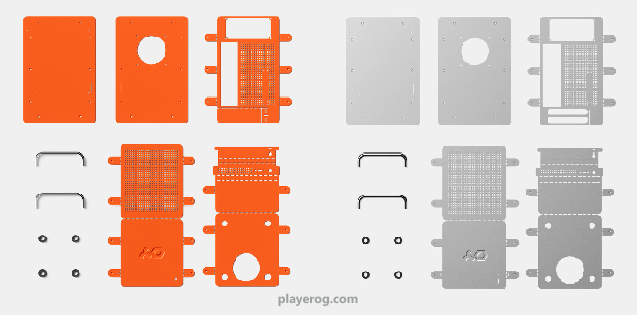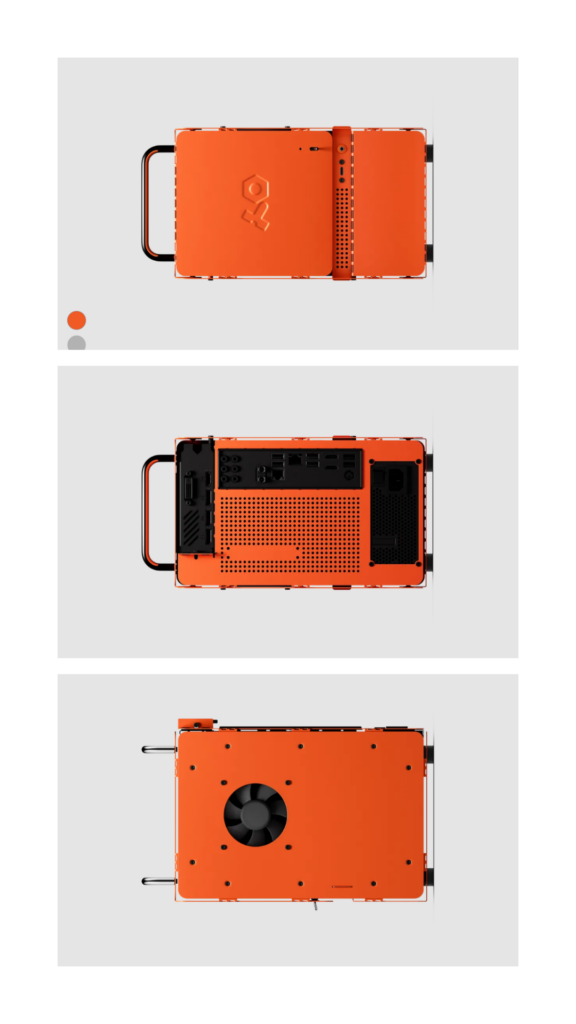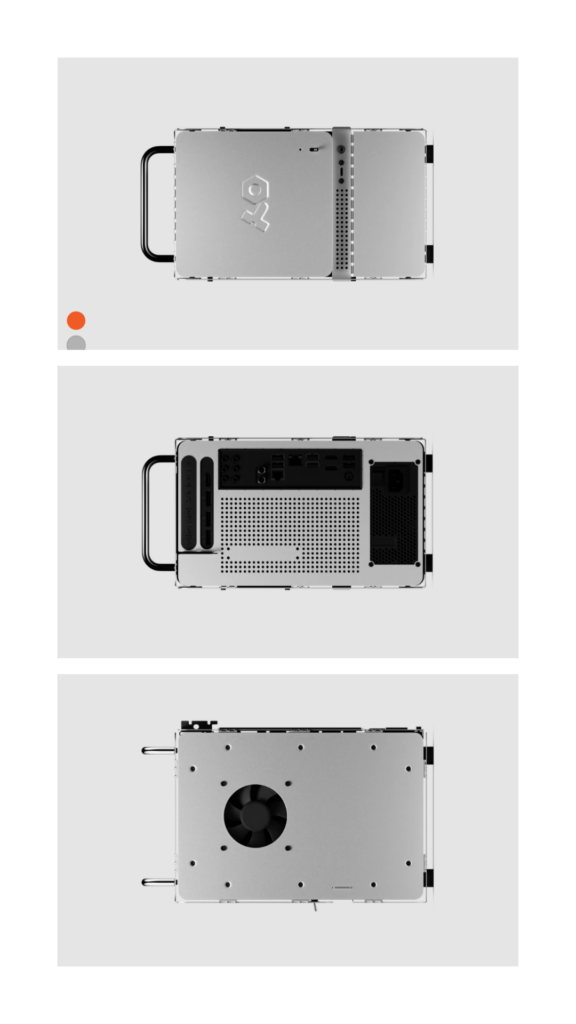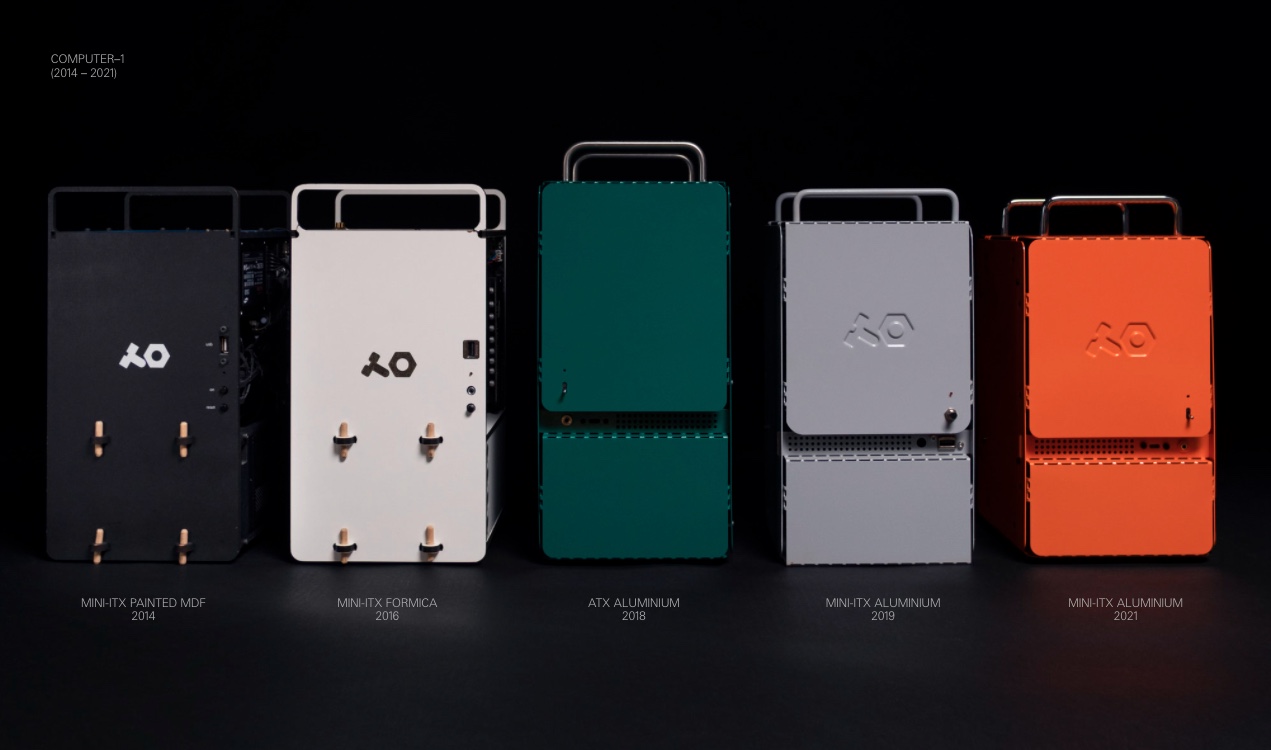Aesthetically unique mini-ITX case, but not practical for many
Teenage Engineering has created a new mini-ITX case, the Computer-1, that is both beautiful and frustrating. With its unapologetically unique design, the Computer-1 is visually impressive and eye-catching. However, the design choices may make it a terrible choice for those looking for practicality in their computer case.
The Computer-1 only supports graphics cards up to 180 mm in length, limiting the choices to only a few models, which is a deal-breaker for many. Its tower form factor is bold and esoteric, focusing more on the overall dimensions than GPU compatibility. This design choice means that the whole case is made of incredibly thin and pliable powder-coated aluminum, making it flimsy and impractical for building.
The assembly process of the Computer-1 is incredibly challenging, with specific orders to assemble it and not coming with the right screws to mount a chassis fan on the side panel. The process is both lengthy and laborious., requiring the removal of at least eight screws to remove any of the panels.
Furthermore, accessing any of the components once the case is assembled is unnecessarily complicated, making it a nightmare for those who need to change out the GPU or access the NVME card on the back of the motherboard.

Computer-1: A Unique Design Choice or Compromised Functionality?
Teenage Engineering’s Computer-1 is an aesthetically unique mini-ITX case that has both impressive and limiting design features. The case is a work of genius when it comes to the design aesthetics, with its polished shiny chrome carrying handles on top, and a toggle switch instead of an on/off button. And a debossed TE logo on the front panel, and black screws on the RAL orange powder-coat.
Now, let’s take a closer look at some technical specifications of the Teenage Engineering’s Computer-1 mini-ITX case.
- Mini-ITX form factor
- Weight: 2.815 lb (1.28 kg)
- Supports dual-slot GPU up to 180 × 130 × 40 mm in size
- SFX power supply compatible
- CPU cooler height limit is 120 mm from the motherboard surface
- Made of aluminum with two color options: powder-coated orange RAL 2004 or anodized aluminum
- Exterior dimensions: W 170 × D 190 × H 322 mm (285 mm without handles); front panel switch protrudes 10 mm, cabling typically needs minimum 50 mm space at the back
- Interior dimensions: W 164 × D 189 × H 275.5 mm; width from motherboard to case is 147 mm, and approximate width from motherboard to case fan varies based on fan thickness.
Building Teenage Engineering
Computer-1: A Challenging and Yet Rewarding Experience

Building a PC can be both an exciting and daunting task, especially when the case is as unique as the Teenage Engineering Computer-1. The Mini ITX form factor and bright orange aluminum case may catch your attention, but it also presents some significant challenges that make the assembly process a lot more complex.
The first hurdle is unfolding the case, which comes flat-packed like an IKEA furniture piece, and then bending and screwing the panels into place. Since the case is small, all parts must fit together tightly, which can be tricky when affixing several pieces to the walls of the case. Assembling most of the PC into a rectangle can be time-consuming and requires patience, especially when the GPU is a bit too tall, causing the top of the case to bulge slightly.
While the case design is stunning, the cooling system can be sub-par, making it challenging to build a powerful PC that can handle intense video editing and motion graphics. The Noctua, for instance, NH-U9S cooler with small 80 mm fans on both sides may keep the Ryzen 9 5900x and the small RTX 3060 with 12 GB of RAM running, but it runs hotter than a full-sized build with equivalent parts. Additionally, the small size limits the use of high-end GPUs that require more fans for better cooling.
Despite the challenges, building the Teenage Engineering PC Computer-1 is a rewarding experience, and the finished product is impressive. The design is unique and industrial, and the bright orange paint job is a refreshing departure from the standard black and white PC boxes. The little switch on the front of the case adds to its charm and makes it the best power toggle on any PC.

Advantages and Limitations of Building Computer-1 Case
PROS
- Unique and attractive design
- Small size.
- Customizable with different components.
- Lightweight.
- Flat-pack design.
- Spirited, beautiful, unique mini-itx case.
- Exceptionally cool design details.
- Decent rigidity despite thin and pliable panels.
- Mac Pro-esque polished silver handles.
- Unadulterated, opinionated design.
CONS
- Complex assembly process.
- Small size makes it challenging to fit all the components correctly.
- Limited space for fans results in sub-par cooling.
- Some high-end components, like large GPUs, may not fit.
- Only supports graphic cards up to 180 mm in length.
- Some screw holes may not align correctly.
- Accessing components once the case is assembled is unnecessarily complicated.
- Removing any of the panels requires removing at least 8 screws, an incredibly tedious process.
- Can be loud due to the limitations of the cooling system.
Wrapping Up: Is the Teenage Engineering Computer-1 the Right Mini-ITX Case for You?
In conclusion, the teenage engineering computer-1 is a unique and stylish mini-ITX case that is suitable for those who are willing to take on the challenge of building it themselves and are aware of its size limitations. It is not recommended for high-end gaming rigs, but it runs well for everyday use. The design is the standout feature of this case, and the power toggle on the front is simply the best. While the fans are a bit loud, they can easily be replaced with quieter ones in the future. All in all, if you’re looking for a mini-ITX case that’s both functional and aesthetically pleasing, the teenage engineering computer-1 is definitely worth considering.
If you’re in the market for a high-quality gaming mouse to go with your new setup, be sure to check out our latest article on The Best Gaming Mouse of 2023.

One response to “Teenage Engineering Computer-1 Case Review”
[…] and stylish accessories to enhance your gaming setup, make sure to check out our review of the Teenage Engineering Computer-1 Case. Along with our top picks for the best gaming laptops to take your gaming experience to the next […]